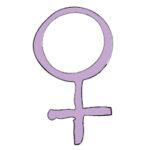 It’s great that you are aware of the type of vaginal discharge you have! This way you can be alert for any changes. As far as the sticky stuff coming from your vagina goes, it’s normal to have a vaginal discharge that is sticky, thin, or thick (clear-whitish). However, it should not have an unpleasant odor. Normal vaginal fluid is the body’s way of keeping the vagina moist and clean. The texture or thickness of your vaginal fluid changes depending on the time of the month. For example: vaginal discharge tends to be clear and stringy around the time of ovulation. However, if you have a change in your vaginal discharge and have any of the signs below, see your health care provider (HCP).
It’s great that you are aware of the type of vaginal discharge you have! This way you can be alert for any changes. As far as the sticky stuff coming from your vagina goes, it’s normal to have a vaginal discharge that is sticky, thin, or thick (clear-whitish). However, it should not have an unpleasant odor. Normal vaginal fluid is the body’s way of keeping the vagina moist and clean. The texture or thickness of your vaginal fluid changes depending on the time of the month. For example: vaginal discharge tends to be clear and stringy around the time of ovulation. However, if you have a change in your vaginal discharge and have any of the signs below, see your health care provider (HCP).
Signs that could mean that you have a vaginal infection:
- Vaginal discharge that is white and lumpy – looks like cottage cheese (common with vaginal yeast infections)
- Vaginal discharge looks like pus or is green, yellow or gray in color
- Vaginal discharge that is bloody, when you are not on your period
- The discharge has an odor
- Itchiness, redness, or swelling in the vaginal area
Lots of girls get yeast infections, especially if they have just finished a course of antibiotics or the weather is hot. Yeast infections are not caused by having sex. However, if you’ve had sex and now you have symptoms, you should see your HCP and get tested for an STI (sexually transmitted infection).
Either way, you should see your health care provider if your vaginal discharge has changed.
Our health guides are developed through a systematic, rigorous process to ensure accuracy, reliability, and trustworthiness. Written and reviewed by experienced healthcare clinicians from Boston Children's Hospital, a Harvard Medical School teaching hospital and consistently ranked as a top hospital by Newsweek and U.S. News & World Report, these guides combine clinical expertise, specialized knowledge, and evidence-based medicine. We also incorporate research and best practices from authoritative sources such as the CDC, NIH, PubMed, top medical journals, and UpToDate.com. Clinical specialists and subject matter experts review and edit each guide, reinforcing our commitment to high-quality, factual, scientifically accurate health information for young people.